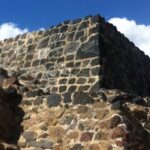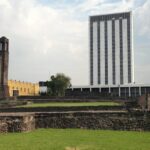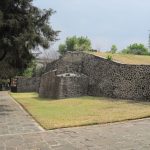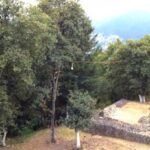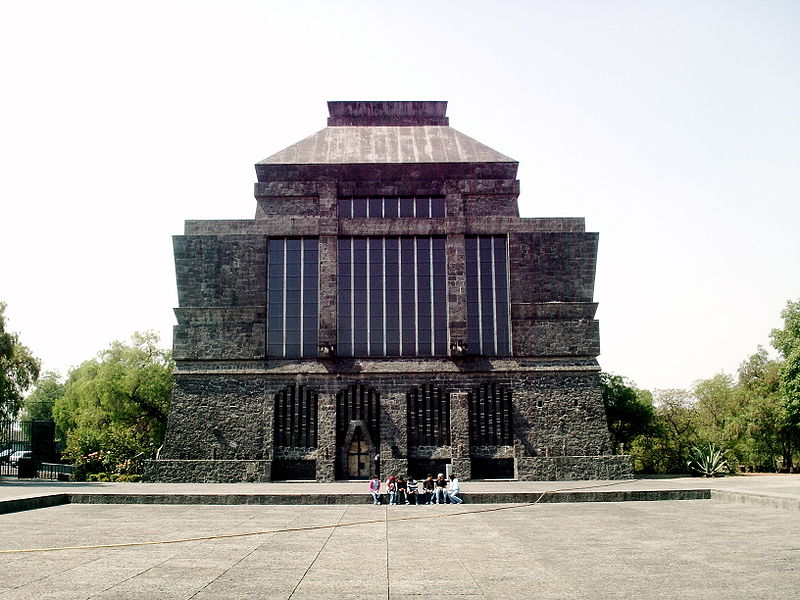
The Anahuacalli Museum is one of a kind. The only pity is that international visitors don’t tend to head here until their third or fourth visits to The City. Entirely conceived of by Diego Rivera, it’s a comprehensive setting for his own collection of pre-Hispanic art works. But it’s also a temple to celebrate architecture, music, artisan works, and theater, and all in a carefully crafted natural setting.
Because there’s so much to say about it, here are some basics to get you started:
- Rivera began the concept and design of the site in about 1933. He invested much of his own time and fortune into the project but died before it opened.
- The site on which the museum today stands was something of a ranch. Here Rivera, and Frida Kahlo dedicated themselves to raising vegetables, making milk and honey, and slowly planning what was to be “their museum.”
- Rivera’s original plans were for a City of the Arts. The museum was to be but one part of a much larger complex. The museum still runs workshops and education programs aimed at fulfilling similar goals.
- Upon his death, Rivera’s lifelong friend, Dolores Olmedo (famous today for her own museum) took on responsibility for the cost and management of the project. Rivera’s daughter, Ruth Rivera, also took up the challenge.
- The museum opened in 1964, some 31 years after Rivera had the idea.
- The building is designed to resemble Teotihuacan, or perhaps Tenochtitlan architecture. The overlarge base is crowned by a temple on top. It’s a strong example of brief early 20th-century trend, today usually called “indigenism” in Mexican architecture. This had developed from 19th-century Neo-Classical treatments of indigenous subjects (see the Garden of the Triple Alliance). Such a style is perhaps better understood in the post-revolutionary context of Mexico’s search for a national identity, and with strong currents of mestizaje.
- The entire facade is covered in the volcanic rock quarried on the site to give it the characteristic dark tone and massive walls.
- As a Temple to the Arts and the surrounding nature were so important, Riviera had met with Frank Loyd Wright and was inspired by the architect’s ideas on landscape integration. It’s a good reason to visit the site in person, as it’s been difficult to capture that aspect through photography.
- Ultimately, the project was given to Juan O’Gorman, the architect most famous for designing the UNAM Central Library building. O’Gorman had also designed the Frida and Diego House and Studio, today also a museum.
- The museum is laid out in U-shaped galleries. Among the twenty-three separate exhibition spaces, the arrangement corresponds to Rivera’s own aesthetic concepts.
- The permanent collection includes about 2000 objects from Rivera’s own collection of about 45,000 works.
- These come primarily from the Olmec, Toltec, Nahua, Zapotec, and Teotihuacan cultures, as well as some from northeastern Mexico cultures.
- Ceilings were embellished with mosaics designed by Rivera and O’Gorman in an attempt to capture a symbolism drawing the ancient and contemporary worlds together.
- Views from the rooftop patios look out on the City from one side. On the other you’ll see the distant Xitle volcano, responsible of the black rock bed on which the museum stands.
- The Anahuacalli Museum’s virtual tour should give you a good idea of what to expect, but of course, a visit in person is worth a lot more.
 +52 (55) 5617 3797
+52 (55) 5617 3797
 http://www.museoanahuacalli.org.mx/
http://www.museoanahuacalli.org.mx/
